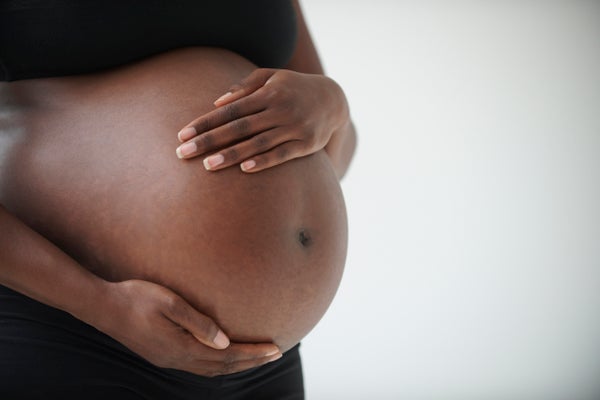Rising temperatures brought on by climate change disproportionately threaten pregnant women who work outdoors, who can't access air conditioning and who are Black or Hispanic, a panel of reproductive justice experts said last week.
That's largely because these women more often experience prolonged — and unmitigated — exposure to brutal temperatures, which have been found to thwart healthy pregnancies, Linda Blount, the chief executive of the Black Women's Health Imperative, said during a webinar Friday.
As a result, in communities of color, high temperatures are one of several factors that drive higher rates of premature deliveries, stillbirths and other dangerous pregnancy outcomes.
On supporting science journalism
If you're enjoying this article, consider supporting our award-winning journalism by subscribing. By purchasing a subscription you are helping to ensure the future of impactful stories about the discoveries and ideas shaping our world today.
In addition, Blount said: "Black women are three to four times more likely to die from a pregnancy-related complication than white non-Hispanic women. First Nation women are twice as likely to die, and Latinas die at about the same rate.
"Stress caused from racial discrimination literally changes a woman's inflammatory and metabolic response. This raises the risk for chronic disease, obesity, maternal mortality and low birth weight babies," Blount added. "Race is not a risk factor. Racism is a risk factor. And now we add a new stressor to that intersection: climate, specifically heat."
Rupa Basu, who serves as the chief of the air and climate epidemiological section at the California EPA, also cited stark statistics during the webinar. Basu's research on the topic dates to 2010, when she co-authored a study that found that for every 10-degree temperature increase in California, preterm deliveries spiked by an average of 8.6%. The risk increased in communities of color. Black women saw a 15% uptick in premature births. Asian women and Hispanic women also experienced higher rates of adverse pregnancy outcomes than white women.
More recently, Basu co-authored a widely circulated report that examined 68 studies on maternal health, heat and pollution that took into account 32 million births across the U.S.
The research, which was published Thursday, found that 57 of the studies identified a positive association between environmental factors and maternal health. A majority of those studies also identified significant racial disparities (Greenwire, June 19).
Basu attributed this disparity in part to the fact that many urban spaces lack greenery but boast an excess of blacktop, which traps warmth and creates an "urban heat island," she said.
Combine that risk with older housing and limited access to air conditioning, and low-income pregnant women who live in cities often have little to no respite from the soaring temperatures.
That type of exposure can result in severe dehydration, which Basu said can cause "systemic inflammation" and affect a pregnant woman's lungs, heart, circulation and "placental fetal exchange" — potentially slowing the baby's growth or inducing premature delivery.
Ana Bonell, who is a health researcher at the London School of Hygiene and Tropical Medicine, noted that researchers have had to rely on animal studies to hypothesize about the granular impacts of heat on maternal health, rather than people.
It's "not ethical to put a pregnant woman in a heat chamber and see what happens," she said.
But based on the research that does exist, Bonell said, it's clear that when pregnant animals are exposed to extreme heat, their fetuses experience stunted growth — which has worrisome implications when considering how global warming could affect human mothers and babies in the long term.
She noted these issues don't only affect people who live in dense, hot and highly polluted cities. They also touch people who live in more rural areas, including pregnant farmworkers both in the U.S. and abroad.
Charo Valero, who is the Florida state policy director with the National Latina Institute for Reproductive Health, often works with migrant farmworkers. Valero said these communities are increasingly experiencing heat illness, dehydration and dangerously high core body temperatures as they work.
Where Valero is based, in Miami, residents experience roughly 40 days each year when temperatures feel 100 degrees Fahrenheit or higher, she said. And scientists warn that figure could jump to more than 130 days by midcentury.
"When we're thinking about pregnant women and reproductive justice specifically, these stories that we're talking about, [with] folks overheating, is something that is common. People are actually dying. And the temperature is only getting hotter," Valero said. "This doesn't just affect farmworkers. This affects all outdoor workers."
Reprinted from Climatewire with permission from E&E News. E&E provides daily coverage of essential energy and environmental news at www.eenews.net.
